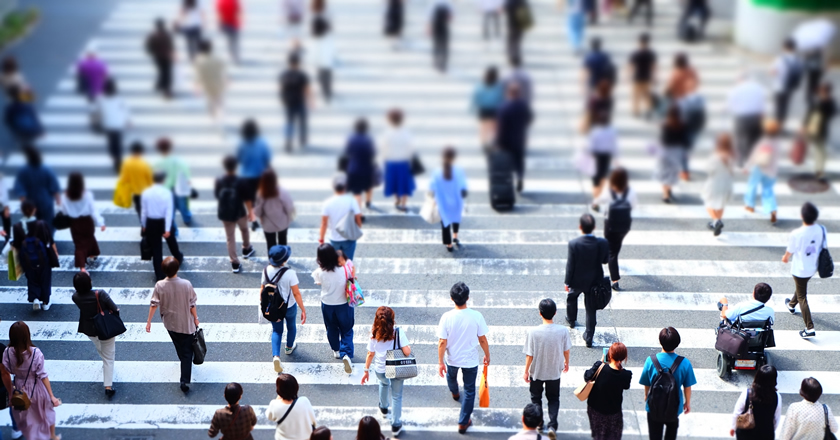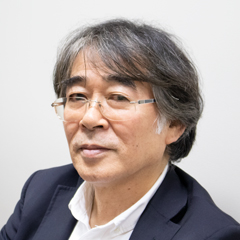Risks and Policies
We live each day surrounded by various risks (dangers). Therefore, we prepare for possible risks that occur at a certain rate. In other words, we prepare for emergencies during peacetime. These risks are usually handled by a multi-layered system which consists of families, communities, and workplaces supporting individuals, as well as the national government supporting such individuals and communities. Today, however, social changes have weakened the functions of communities. As a result, a new challenge has arisen: how do we build communality in a safe and secure society?
I think the government’s policy to realize this communality of society can be called public policy. There are three main types of policies: those aimed at maintaining public order such as public security and justice (order policy), those aimed at economic stability and development (economic policy), and those aimed at stabilizing and improving social life (social policy). These policies are normally implemented through regulations and benefits. When these three policies are interrelated and function, individuals, families, communities, businesses, non-profit organizations, and governments can work together to ensure the safety and security of people. This means that necessary measures are taken by working closely together not only in normal times but also in times of need.
So, we are prepared to respond to the risks that occur or are assumed at certain rate, but not necessarily to the unknown risks such as the new coronavirus. Whether we will be able to continue to live safely with security, what kind of policies the government will implement, and what thoughts and reactions citizens will take for such policies are questions that the communality of our society will be called on to answer.
Risks and Social Security
As I mentioned earlier, social policies are positioned as policies aimed at stabilizing and improving social life. These include employment policies, income security policies, health and medical policies, interpersonal service policies (narrowly defined welfare policy), housing policies, and education policies. Social security is closely associated with these policies.
Needless to say, our lives are maintained and improved by securing a place to live and a place to work, by earning a certain level of income, and by purchasing and consuming the goods and services necessary for our everyday lives. However, various risks occur in our lives during the course of working and living. For instance, we need medical treatment when we have an injury or illness and alternative means of income to compensate for a decrease or loss of income in the case of job loss, work-related accidents, old age, disability or death. In addition, some people need personalized life support such as assistance for impaired of physical functions and support for raising children. The social security system is an institutional mechanism where the government recovers, stabilizes, and improves the lives of citizens in response to the risks of living that people face. According to Japan’s system classification, the narrowly defined social security consists of social insurance, public assistance, social welfare, public health, and medical care; the broadly defined social security consists of the narrowly defined social security, health and medical services for the aged, pension, and war victims; and the social security system includes housing and employment measures. These three securities are protecting the lives of citizens.
Today, these systems are being reformed in line with the aging of the population, economic trends, and changes in communities (family, community, workplace, etc.), but have they been adjusted for an emergency situation? In regard to this point, the Lehman Shock and the Great East Japan Earthquake in recent years can be useful examples that had a major impact on the lives of citizens and the environments supporting them, such as the economy, employment, urban environment and natural environment. Accordingly, temporary and emergency reforms were undertaken first, followed by policies and initiatives for recovery, stability, and improvement.
During economic and disaster risks such as the Lehman shock and the Great East Japan Earthquake, systems for normal times were once applied, but such systems were not sufficient to provide adequate relief. Therefore, emergency and temporary measures were taken. The systems for normal times failed owing to several reasons, including the need for urgency, limitations of the system (eligibility and qualification requirements, structure, content and level), lack of social resources to meet the needs, and insufficient supports for the system (human resources, organizational and financial affairs.)
Personally, I can recall as if it were yesterday how much I was shocked and saddened when I saw the scenes of the “dispatch workers’ village” in Hibiya Park, where many unemployed, homeless, and non-regular workers who had lost their jobs and homes came for advice during the Lehman Shock, and when I saw the human damage and property damage immediately after the Great East Japan Earthquake and the devastated urban and natural environments in the disaster-stricken areas. We found that the social security system in normal times cannot cope with rapid deterioration of the economic and employment environment and natural disasters.
The Government of Japan has recognized that their systems are able to respond to anticipated risks which occur at a certain rate, but they cannot function adequately in times of emergency. Subsequently, institutional reforms centered on the second safety net were advanced after the Lehman Shock, and disaster legislation and subsequent social security reforms were conducted after the Great East Japan Earthquake. In my opinion, however, such reforms have not reached the satisfactory levels in terms of institutional design, content, and standards.
In this regard, it would be ideal to have a separate two-stage system to deal with risks in normal times and risks in times of emergency, as well as many other systems and social security systems including these.
New Coronavirus Countermeasures and Social Security
What about policies and measures for the new coronavirus pandemic? What should be done to ensure that people can live safely with security, for example, by supporting lives, daily living, and employment?
At present, there is no treatment or remedy for the new coronavirus. Therefore, social distancing to prevent infection and medical procedures to avoid risks from infected persons are taken as the main measures.
On April 7, 2020, a state of emergency was declared in response to the increase in the number of people infected with the new coronavirus. Self-restraint by citizens and self-restraint in business were requested by the government. As a medical measure, treatment methods and location (hospitalization/home care) were determined according to the result of a PCR test and the severity of the infection. In addition, compensation for absence from work and income security for employees who were forced to suspend business operations were provided in the form of partial compensation or loans. In the area of social welfare, measures are being taken to reduce daycare services such as childcare centers and day care centers, while the residential care services at welfare facilities remain the same as usual. However, there is no compensation for absence from work, income security, or employment security to cover voluntary suspension of business, absence from work, or leave from work. In addition, welfare services which may be exposed to the “three Cs” (crowds, close contact, and confined spaces with poor airflow) have not established adequate safety or alternative measures for residential or outpatient facilities. The medical system is in a difficult situation with an inadequate volume of medical resources despite all the efforts by supporters, including medical workers who are dealing with medical risks.
I consider that, in terms of income security for example, it would be appropriate to provide income to all individuals except for high-income earners who earn close to basic income in an emergency, and to increase wages and improve the working environment for healthcare workers, other emergency responders, social security and social welfare supporters, and essential workers such as lifeline company workers.
In light of this situation, I would like to discuss the need for such consideration from the following viewpoints. Firstly: time. It is necessary to distinguish between emergency time and short and medium-to-long term, and to formulate policies based on an objective of focusing on the urgency and immediate effects of the system which impose less restrictions (e.g. simplified application procedures) and provide broad coverage, such as temporary absence from work, life security, and housing security, while economic and social activities are voluntarily restrained owing to emergency situations. Secondly: areas. Under the declaration of the state of emergency, voluntary restraint was requested mainly in large cities with a high risk of infection. However, considering population migration, it may be necessary to request voluntary restraint not only within limited geographical areas but also across the country. Thirdly: relationships. Social life is based on relationships with people, including family, school friends, co-workers, and community residents. It is necessary to consider to what extent self-restraint should be exercised while maintaining relationships. Relationships in isolated environments can fall into a downward spiral (e.g., abuse, domestic violence, etc.) Lastly: information. The government should provide appropriate information on infection and guidelines for citizens based on such infection. This will lead to accurate judgment and actions by individuals, families, communities, companies, etc. In addition, along with the provision of information, we need a guideline and a road map to make a forecast of what kind of decisions (policy) will be made in what kind of situation.
Health risks such as the new coronavirus have different aspects from economic and disaster risks, but we have a history of overcoming the risks of emergencies, including infectious diseases. I believe that the immediate and effective implementation of comprehensive measures tailored to the economic and social lives of citizens, centering on medical security, employment, housing, income, interpersonal services and education, will be the future vision. Thinking what should be done from each standpoint and what actions should be taken in the future will lead to a society where people can live with security.
* Updated in May 2021 based on the Japanese version of an article (made public in June 2020)
* The contents of articles on Meiji.net are based on the personal ideas and opinions of the author and do not indicate the official opinion of Meiji University.
* I work to achieve SDGs related to the educational and research themes that I am currently engaged in.
Information noted in the articles and videos, such as positions and affiliations, are current at the time of production.


